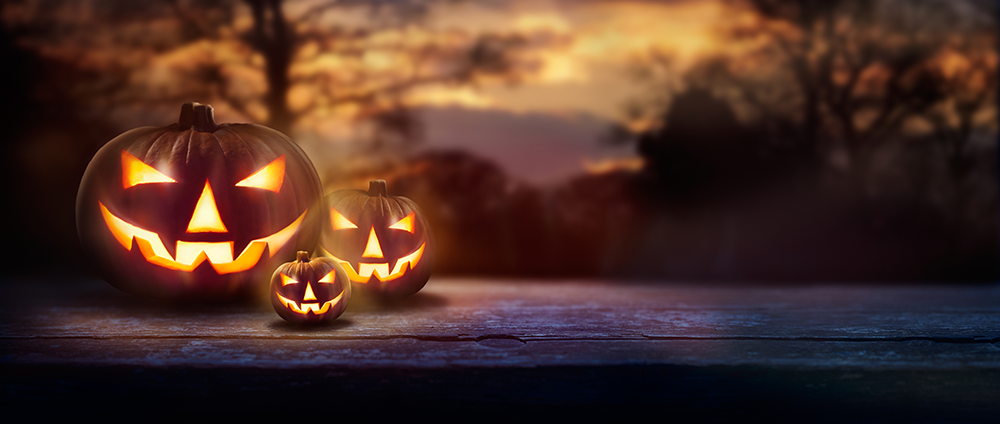Best Fabrics for Making Halloween Costumes18 August 2024 | Admin
When creating the perfect Halloween costume, choosing the right fabric is crucial. The fabric affects not only the costume's overall look and feel but also its comfort and durability. Here's a detailed guide on the best fabrics for Halloween costumes, including their pros, cons, and ideal uses. CottonPros: Comfortable, breathable, and easy to sew. Cons: Not very stretchy, may require lining for more structured costumes. Best for: Simple costumes, children's costumes, and base layers. Cotton is a versatile and widely available fabric perfect for many types of costumes. Its comfort and breathability make it an excellent choice for kids and adults, especially those who plan to wear their costumes for extended periods. PolyesterPros: Durable, wrinkle-resistant, and available in many finishes and colours. Cons: Not as breathable as natural fibers. Best for Shiny or sparkly costumes, superhero outfits, and costumes that need to hold a shape. Polyester is a synthetic fabric known for its durability and ease of care. It's ideal for costumes that require a bit of shine or sparkle, such as superhero outfits, and can hold shapes well, making it suitable for more structured designs. Spandex/LycraPros: Stretchy and form-fitting, great for body-hugging costumes. Cons: Can be tricky to sew without the right equipment. Best for Superhero costumes, dancewear, and anything needing a sleek, tight fit. Spandex, also known as Lycra, is a stretchy fabric that clings to the body, making it perfect for costumes that require a tight fit. It's often used in superhero costumes and dancewear due to its flexibility and comfort. FleecePros: Warm, soft, and easy to sew. Cons: Bulky and not suitable for all costume styles. Best for: Animal costumes, warm costumes for outdoor events. Fleece is a warm, soft fabric for outdoor or cooler costumes. Its ease of sewing makes it a popular choice for beginners and is ideal for animal costumes or any outfit needing a cosy feel. Velvet/VelveteenPros: Luxurious appearance, soft texture. Cons: Can be challenging to sew, expensive. Best for Royalty or period costumes, witch costumes, and luxurious garments. Velvet and velveteen offer a rich, luxurious look and feel, making them perfect for costumes like royalty, witches, or any character needing a touch of elegance. However, these fabrics can be tricky due to their pile and cost. TullePros: Lightweight, adds volume, and is inexpensive. Cons: Can be itchy, not very durable. Best for Fairy costumes, ballerinas, and adding volume to skirts or dresses. Tulle is a sheer, net-like fabric that creates ethereal, whimsical looks. It's commonly used in fairy or ballerina costumes and can add volume and texture without much weight. SatinPros: Shiny and smooth, available in many colors. Cons: Slippery and can be challenging to sew. Best for: Princess costumes, elegant dresses, and capes. Satin's shiny, smooth surface makes it a go-to fabric for elegant and glamorous costumes. It's ideal for princess dresses and capes, though it can be slippery and requires careful handling during sewing. Faux FurPros: Adds texture and warmth, great for animal costumes. Cons: Bulky, can be tricky to cut and sew. Best for: Animal costumes, monster costumes, and accents. Faux fur is perfect for creating animal costumes, adding texture and a realistic touch to various outfits. While it can be bulky and difficult to handle, the results are often worth the effort. Jersey KnitPros: Soft, stretchy, and comfortable. Cons: Can be tricky to sew without stretching out of shape. Best for Form-fitting costumes, casual costumes, and anything requiring flexibility. Jersey knit is a soft, stretchy fabric that offers great comfort and flexibility, making it ideal for form-fitting costumes or those requiring a lot of movement. It's a good choice for casual costumes and dance outfits. BroadclothPros: Versatile, easy to sew, available in many colours. Cons: Can be thin, may need lining. Best for: Basic costumes, capes, and simple dresses. Broadcloth is a basic, versatile fabric that's easy to work with and comes in many colours. It's suitable for simple costumes, capes, and basic dresses, although it might require lining for added structure. OrganzaPros: Sheer, lightweight, and adds a magical or ethereal quality. Cons: Delicate, can fray easily. Best for: Fairy wings, overlays, and ghostly costumes. Organza is a sheer, lightweight fabric that adds a touch of magic to any costume. It's ideal for fairy wings, overlays, and ghostly costumes, but be mindful of its delicate nature and tendency to fray. Choosing the right fabric for your Halloween costume can make all the difference in the final look and comfort of the outfit. Consider the characteristics of each fabric, including its pros and cons, to ensure your costume is both stunning and practical. Happy costume-making! |
|



